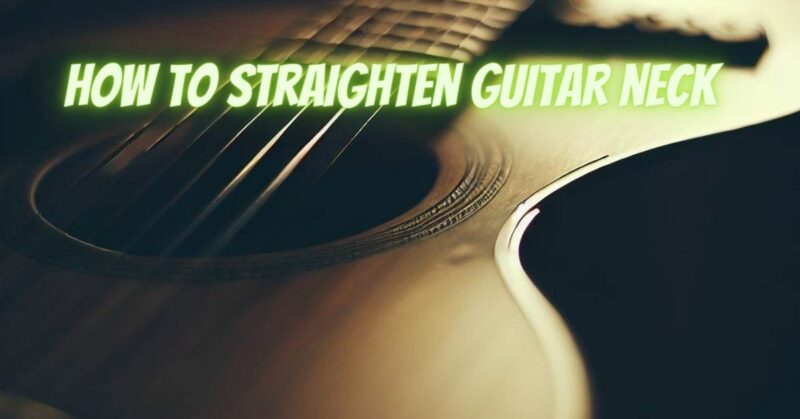A guitar neck that has developed a bow or excessive curvature can negatively impact playability and sound quality. Fortunately, many neck issues can be addressed by adjusting the neck relief. In this article, we will provide you with a step-by-step guide on how to straighten a guitar neck, helping you restore optimal playability and performance.
Step-by-Step Guide to Straightening a Guitar Neck:
- Assess the Neck: Begin by examining the guitar neck to determine the extent of the bow or curvature. Place the guitar in playing position and observe if the neck appears excessively bowed or misaligned.
- Loosen the Strings: To facilitate the adjustment process, loosen the guitar strings. However, do not remove them entirely.
- Locate the Truss Rod Adjustment Point: Identify the location of the truss rod adjustment point on your guitar. It can be found either at the headstock or accessed through the soundhole, depending on the guitar type.
- Understand Truss Rod Function: Familiarize yourself with the function of the truss rod. It is designed to counteract the tension exerted by the strings, allowing for neck relief adjustment. A clockwise turn tightens the truss rod, while a counterclockwise turn loosens it.
- Make Small Adjustments: Using the appropriate tool (often an Allen wrench or specialized truss rod tool), make small quarter-turn adjustments to the truss rod. Start with gentle adjustments to avoid over-tightening or damaging the neck. Remember, gradual adjustments are crucial to ensure a safe and controlled process.
- Observe the Neck Relief: After each adjustment, allow the neck to settle for a short period. Re-tune the guitar and check the neck relief by observing the gap between the strings and the frets in the middle of the neck. Aim for a slight forward bow, approximately the thickness of a business card.
- Repeat as Needed: If the neck relief is still excessive, continue making small adjustments, repeating steps 5 and 6 until the desired neck relief is achieved. Take your time and be patient during the process to avoid making sudden or excessive changes.
- Re-Tune and Test: Once the desired neck relief is achieved, re-tune the guitar and test playability. Check for comfortable string action, absence of buzzing, and overall improved playability. Adjustments may also require additional fine-tuning of the guitar’s bridge or saddle height to achieve optimal string action.
- Seek Professional Help if Necessary: If you are unsure about adjusting the neck or if the neck issue persists despite your efforts, it is advisable to consult a qualified guitar technician. They have the expertise to diagnose and address more complex neck problems.
Conclusion:
Straightening a guitar neck involves adjusting the neck relief through the truss rod. By following the step-by-step guide outlined in this article, you can effectively address bowing or excessive curvature in the neck and improve playability. Remember to make small, gradual adjustments, allowing the neck to settle after each turn. If you encounter difficulties or prefer professional assistance, consult a qualified guitar technician who can provide expert guidance. With proper adjustments, you can restore optimal playability and sound quality to your guitar.

